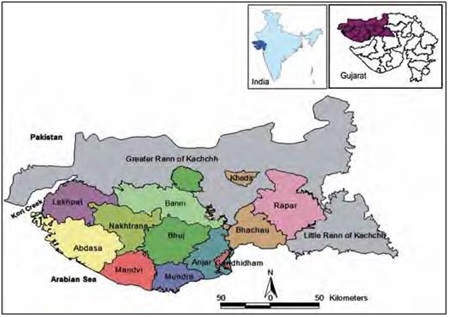

Context
The Gujarat forest department plans to restore 10,000 hectares of the Banni grasslands in the coming year.
About
- Gujrat is planning to restore at least 76,000 hectares of this (banni grassland) 2,497 sq. km grassland.
- It has already restore 10,000 hectares over the past couple of years.
- This grassland is a high-biodiversity area.
- The grasslands of Gujarat constitute about 4.33 per cent (8,490 sq km) of the total geographical area.
About Banni Grasslands:
- Banni Grassland is situated near the Great Rann of Kutch in Gujarat. It is considered to be the largest Grassland in Asia.
- The grassland spreads over 2,618 kilometers and accounts for almost 45% of the pastures in Gujarat.
- Formation: The word ‘Banni’ comes from the Hindi word ‘banai’, meaning made. The land here was formed from the sediments that were deposited by the Indus and other rivers over thousands of years.
- Ecosystem: Two ecosystems, wetlands and grasslands are juxtaposed in Banni.
- Vegetation:
- The vegetation in Banni is sparse and highly dependent on rainfall.
- It is dominated by low-growing forbs and graminoids, many of which are halophiles (salt-tolerant), as well as scattered tree cover and scrub.
- The grasslands were traditionally managed by a system of rotational grazing.
- Flora and Fauna: The area is rich in flora and fauna with 192 species of plants, 262 species of birds, several species of mammals, reptiles, and amphibians.
- Reserve Forest: In 1955, the court notified the grassland will be a reserve forest. In, 2019, the NGT ordered to demarcate the boundaries of the Banni grassland and restricted non-forest activities.


